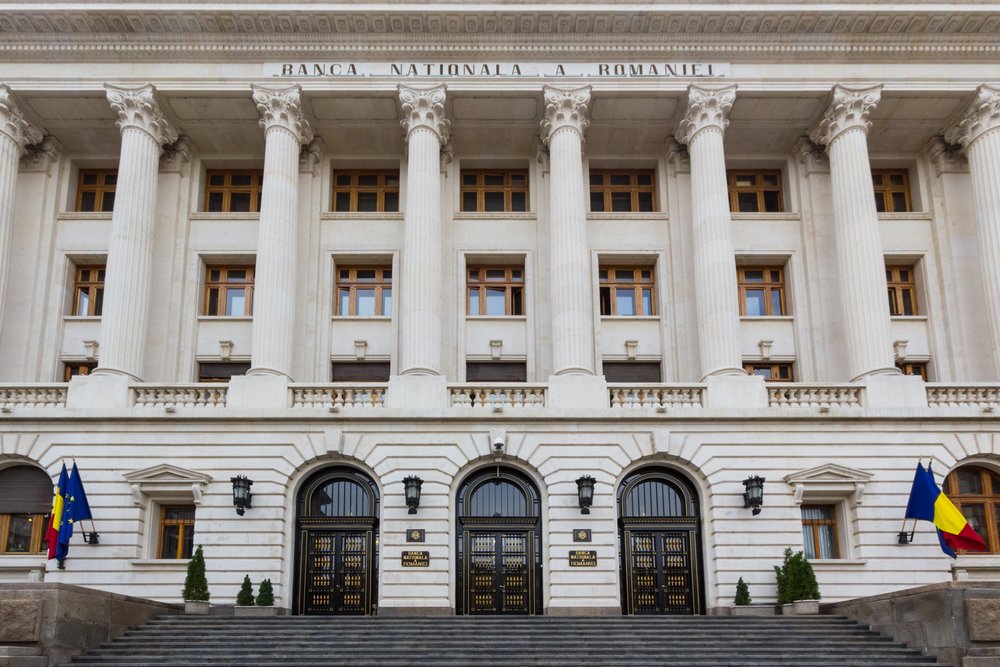In its meeting on 5 July 2024, the Board of the National Bank of Romania decided to cut the monetary policy rate from 7.00% to 6.75% per annum starting 8 July 2024. BNR also lowered the lending (Lombard) facility rate from 8.00% to 7.75% per annum and the deposit facility rate from 6.00% to 5.75% per annum, while maintaining the current minimum reserve requirement ratios for both leu- and foreign currency-denominated liabilities of credit institutions.
The annual inflation rate declined more quickly in the first two months of Q2 2024, falling to 5.12% in May from 6.61% in March, due mainly to a significant drop in energy prices, particularly natural gas, following legislative changes in April and a slower rise in food prices.
The annual adjusted CORE2 inflation rate also decreased gradually, aligning with forecasts, down to 6.3% in May from 7.1% in March 2024. This deceleration was driven by disinflationary base effects, corrections in agri-food commodity prices, decreasing import prices, and a slight downward trend in short-term inflation expectations. However, new increases in unit labor costs in early 2024, partly passed into some goods and services prices due to strong consumer demand in April, had a moderate opposing effect.
The annual inflation rate based on the Harmonised Index of Consumer Prices (HICP) dropped to 5.8% in May 2024 from 6.7% in March 2024. Meanwhile, the average annual CPI and HICP inflation rates decreased to 7.6% and 8.3%, respectively, in May from 8.5% and 8.3% in March 2024.
Economic activity grew by 0.4% in Q1 2024, less than expected, following a 0.6% contraction in Q4 2023, likely reducing excess aggregate demand contrary to expectations. Annual GDP growth also slowed significantly to 0.1% in Q1 2024 from 3.0% in the previous quarter, mainly due to a sharp drop in gross fixed capital formation, while household consumption grew faster annually.
Net exports exerted a larger contractionary influence in Q1 2024 due to a slight increase in the differential between import and export volumes, with imports growing stronger. However, the trade deficit’s annual growth rate remained unchanged, while the current account deficit decreased significantly, partly due to a substantial rise in the secondary income surplus driven by EU fund inflows.
Data and analyses indicate notable quarter-on-quarter economic growth in Q2 2024, stronger than expected, suggesting a marked increase in annual GDP dynamics. In April 2024, annual growth rates of retail sales, motor vehicles and motorcycles sales surged compared to Q1 2024 averages. Industrial output rebounded strongly, and construction volume growth returned to a two-digit level after significant declines in early 2024. However, imports of goods and services grew much faster than exports, deepening the trade deficit and doubling the current account deficit year-on-year amid worsening primary and secondary income balances.
In the labor market, the number of employees increased swiftly in April 2024, with the ILO unemployment rate rising slightly to 5.4% in April-May, below the average 5.6% level of the last two quarters of 2023. The nominal gross wage growth rate remained high in early 2024 and steady in April, while unit labor costs in industry were particularly elevated in Q1 2024 before dropping sharply in April due to a calendar effect. Employment intentions followed an upward trend in Q2 2024, despite a substantive drop in June, and companies reported a wider labor shortage.
Main interbank money market rates remained stable in May and slightly declined afterward. Long-term government securities yields moderately declined in mid-Q2 but then increased, influenced by fluctuating investor expectations on the Fed’s interest rate outlook and political events in Europe affecting global financial market sentiment and regional risk perception. Consequently, the EUR/RON exchange rate remained at higher levels in May-June after rising in April.
Private sector credit growth increased to 5.8% in April from 4.7% in March and stayed relatively steady at 5.7% in May, with domestic currency loans accelerating and foreign currency credit growth mildly rising. The share of leu-denominated loans in private sector credit decreased slightly to 68.8% in May from 68.9% in March 2024.
Current assessments predict the annual inflation rate will continue to decline over the coming months, following a significantly lower path than anticipated in the May 2024 medium-term forecast. This is primarily due to base effects, legislative changes in the energy sector, slower import price growth, and gradually adjusting short-term inflation expectations.
Significant uncertainties and risks stem from future fiscal and income policies, budget execution in early 2024, public sector wage dynamics, the full impact of the new pension law, and potential future fiscal measures for budget consolidation amid the excessive deficit procedure and other EC agreements. Labor market conditions and wage dynamics also present uncertainties and risks, as do the impacts of recent legislative changes on natural gas and electricity prices and crude oil price trends.
Additional uncertainties and risks to the economic outlook and medium-term inflation arise from the Ukraine war, Middle East conflict, and economic performance in Europe, particularly Germany. The absorption of EU funds, especially from the Next Generation EU programme, is conditional on meeting strict milestones and targets, essential for structural reforms, energy transition, and offsetting geopolitical conflicts’ contractionary impacts. The ECB’s and Fed’s monetary policy stances and regional central banks’ actions are also relevant.
Given the latest data and prospects for further declines in the annual inflation rate, along with still elevated uncertainty, the NBR Board decided on 5 July 2024 to cut the monetary policy rate to 6.75% per annum from 7.00% per annum starting 8 July 2024. Additionally, the lending (Lombard) facility rate will be lowered to 7.75% per annum from 8.00% per annum, and the deposit facility rate to 5.75% per annum from 6.00% per annum. The minimum reserve requirement ratios for leu- and foreign currency-denominated liabilities of credit institutions will remain unchanged.
The NBR Board’s decisions aim to ensure medium-term price stability, supporting sustainable economic growth. The Board emphasizes the importance of a balanced macroeconomic policy mix and structural reforms, including using EU funds to enhance long-term growth potential, maintaining a stable macroeconomic framework, and strengthening the Romanian economy’s resilience to adverse developments.
The NBR will closely monitor domestic and international developments and is prepared to use its tools to achieve medium-term price stability while safeguarding financial stability.
The minutes of the discussions leading to today’s monetary policy decision will be posted on the NBR’s website on 17 July 2024 at 3:00 p.m.
The next monetary policy meeting of the NBR Board will be held on 7 August 2024.
The post Central Bank cuts the monetary policy rate to 6.75% from 7.00% appeared first on The Romania Journal.




